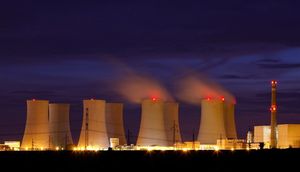
Wildlife photography requires skill, patience, and an excellent camera to capture the animals in the wild doing what they do naturally.
If you’re new to wildlife photography and want to get started, choosing the best camera for the job can seem like quite the challenge. Luckily, there are several features of modern digital cameras that will help you out.
Here are a few tips from Tom Baskind on how to get the perfect camera for wildlife photography.
What is Your Budget?
When it comes to choosing the best camera for wildlife photography, budget is an important factor. Wildlife photography can be quite expensive, and it’s important to consider your budget before making a purchase.
If you’re on a tight budget, look for cameras with a good range of features at an affordable price. Entry-level DSLRs can be great for wildlife photography, as they are usually cheaper than the high-end options but still come with powerful features.
Point-and-shoot cameras can also be a good choice if you’re on a budget, as they are generally much cheaper than DSLRs.
If you have a larger budget, you’ll have more options when it comes to choosing the best camera for wildlife photography.
High-end DSLRs and mirrorless cameras often have more robust features than their entry-level counterparts, such as faster autofocus, higher resolution sensors, better low-light performance, and more.
Look for cameras with large sensors that offer a wide range of ISO settings, as well as good low-light performance.
What Type of Wildlife Do You Want to Photograph?
When it comes to wildlife photography, the type of camera you choose is just as important as the type of wildlife you photograph.
Different animals require different types of cameras to capture the best images, and not all cameras are designed for wildlife photography.
To begin, consider what type of wildlife you want to photograph. If you plan to take pictures of birds, look for a camera that has a powerful zoom lens. You’ll need to be able to capture your subjects in detail, so make sure the lens is long enough to do that.
For larger mammals such as bears or tigers, look for a camera with a large sensor. You’ll need the extra space to capture all of their features, as well as plenty of detail.
Camera Weight
Another factor to consider is the weight of the camera. Wildlife photography often requires long hikes and excursions, so you’ll want to look for a lightweight camera that won’t tire you out.
Also, consider the speed of the camera’s shutter. Fast shutter speeds will help you freeze motion in your photos and capture fleeting moments with precision.
What Are Your Lens Options?
When it comes to wildlife photography, having the right lens is essential. Different lenses offer different advantages and disadvantages, so it’s important to consider your specific needs before investing in a lens.
The two main types of lenses you’ll want to consider are telephoto lenses and wide-angle lenses.
Telephoto lenses allow you to get close-up shots of distant wildlife, while wide-angle lenses give you the ability to capture expansive landscapes and get a wider view of the environment around you.
Check Out Thomas Baskind Collection for Inspiration
Choosing the right camera for wildlife photography is an important step to take if you want to capture the beauty of nature at its fullest.
Whether you are a beginner or a professional, having the right equipment can make all the difference when it comes to capturing stunning wildlife images.






